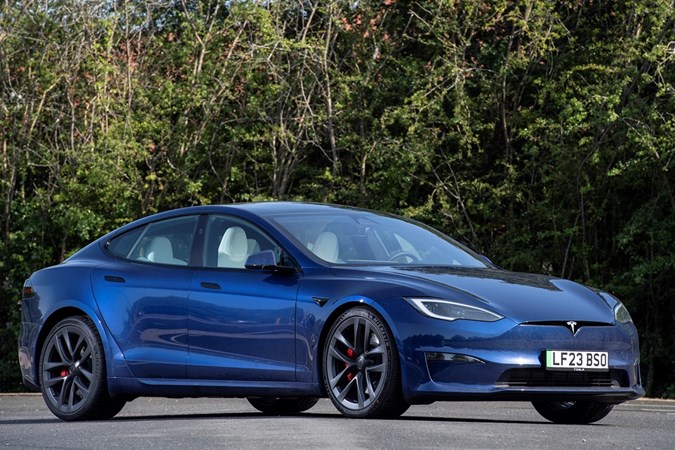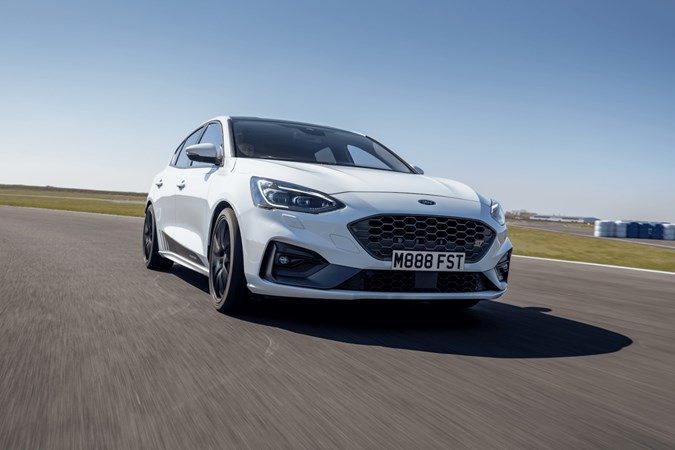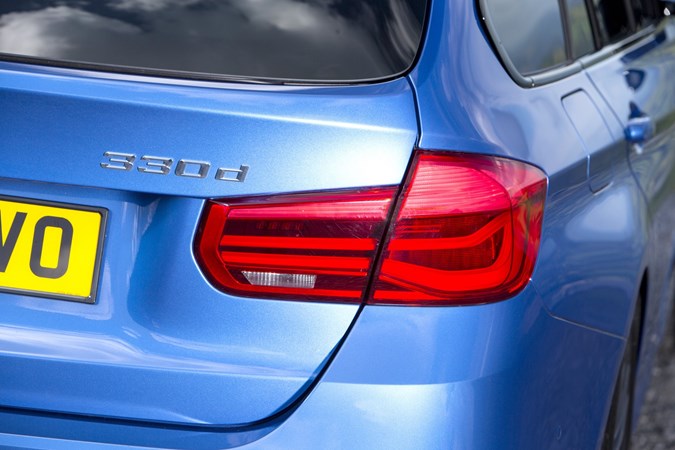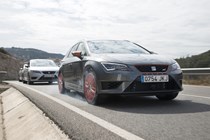Read any car review – including here at Parkers – and you’ll see reference to that car’s 0-62mph time. It’s an industry standard benchmark that’s become a shorthand illustration of what a car’s performance is like. But what does it mean in practice, and is it even relevant?
Here, we’re going to explain how and why the 0-62mph test came about, how it’s tested, what it tells you about a car, and what it doesn’t. If want to find out what other bits of car-related terminology and jargon mean, head over to our glossary page.
Why 0-62mph times became so important
It probably took about five minutes for the inventor of the automobile, Carl Benz, to look at his contraption and think ‘I wonder how fast it’ll go?’ It’s a question everyone else with an interest in cars asked, as well.
That’s why recording acceleration times has been an integral part of testing and reviewing cars for over 100 years. Essentially since they became fast enough to record meaningful figures. Incidentally, Benz’s first automobile, the Patent-Motorwagen, had a top speed of 10mph and took quite a long time to get there.

Early car reviews would often give acceleration times in 10mph increments up to 50mph, if the car could reach such a heady velocity. But it wasn’t just about the car testers having some fun.
Manufacturers were still perfecting the internal combustion engine, trying new ways to make them as powerful and efficient as possible. The science was so inexact that cars with the same sort of engine producing the same sort of power could have very different acceleration times. That told the testers and their readers something about the cars’ relative real-world performance and the driving experience in general. The faster car was likely to be smoother and quieter, the slower car rough and loud. Some viewed it as a matter of safety, as well. In a time before blanket speed limits, the fastest cars could come barrelling up behind you at twice your speed – even if you were going flat-out.
As time went on, acceleration times became increasingly important to regular car buyers, not just enthusiasts. So the car manufacturers started recording and publishing their own acceleration times. 0-60mph became the benchmark in the UK by the late 1960s, once every car on sale could comfortably exceed that speed. But, since most car manufacturers are based in countries that use the metric system, they published figures for 0-100km/h, an imperial 0-62mph.
0-62mph times are still regarded as a good barometer of a car’s overall performance but, as we’ll come to shortly, it doesn’t give you the whole picture.

Why does a car’s 0-62mph time matter to me?
As we discussed earlier, measuring a car’s acceleration times isn’t just a matter of curiosity. It can tell you a lot about a car’s overall performance and how it feels to drive. It was even regarded as a matter safety in the past, and some people still take that view.
Let’s say you’ve got two cars, one that accelerates from 0-62mph in 12.0 seconds and one that takes 8.0 seconds. In the real world, the quicker car will feel nippier and more responsive at low speeds, to the benefit of town driving. At higher speeds, the quicker car will generally feel more muscular when overtaking and better able to maintain motorway speeds, especially on hills. Add that together and the quicker car will be easier, quieter and more comfortable to drive.
We should note at this point that you don’t need lots of power for quick acceleration times. Weight, traction and gearing all play a part, as well. For instance, the 280hp Ford Focus ST has a 0-62mph time of 5.7 seconds, while the Caterham Seven 2000 is a second quicker despite having 100hp less – because it’s 1,000kg lighter. Equally, the most powerful lorries can take 30 seconds or more just to reach 30mph, because they’re so heavy.

The problems with 0-62mph times
Though a car’s 0-62mph time is a good benchmark for its performance, it’s by no means perfect. For a start, there are no regulations for how manufacturers test it. They conduct their tests in tightly controlled conditions, with a car that’s working as effectively as possible, using a driver who can control the pedals with millimetric precision and smoothness. In short, the test is virtually impossible to replicate in the real world.
Some manufacturers go even further. Tesla, for instance, doesn’t start the stopwatch until the car has moved forwards a foot or so. Some allegedly use rolling roads to take tyre friction and aerodynamic drag out of the equation. And BMW and Porsche are notorious for claiming their cars are slower than they actually are.
There’s also an argument that 0-62mph times are largely meaningless because we don’t actually drive like that. Acceleration times for 10-30mph and 40-70mph are perhaps more relevant to real world driving.

That’s because they tell you how quickly a car can accelerate into a gap in traffic or overtake a tractor. It can be that a car that’s very quick from 0-62mph is less impressive between more relevant markers because its engine hasn’t been tuned for them. And so it won’t be as pleasant to drive as an apparently slower car.
How Parkers uses 0-62mph times
There are still some motoring publications that record their own acceleration times when they test a car, but in Parkers reviews we use the figures published by a car’s manufacturer. Yes, they’re not perfect, but they are a decent illustration. And we never just present the bald numbers.
Our reviews always tell you what a car’s performance feels like in the real world, how nippy it feels around town and how muscular it feels on the open road. Because we believe that’s the information you want and need. You can find out more about how we test cars at Parkers on our explainer page.
Just so you know, we may receive a commission or other compensation from the links on this website - read why you should trust us.












